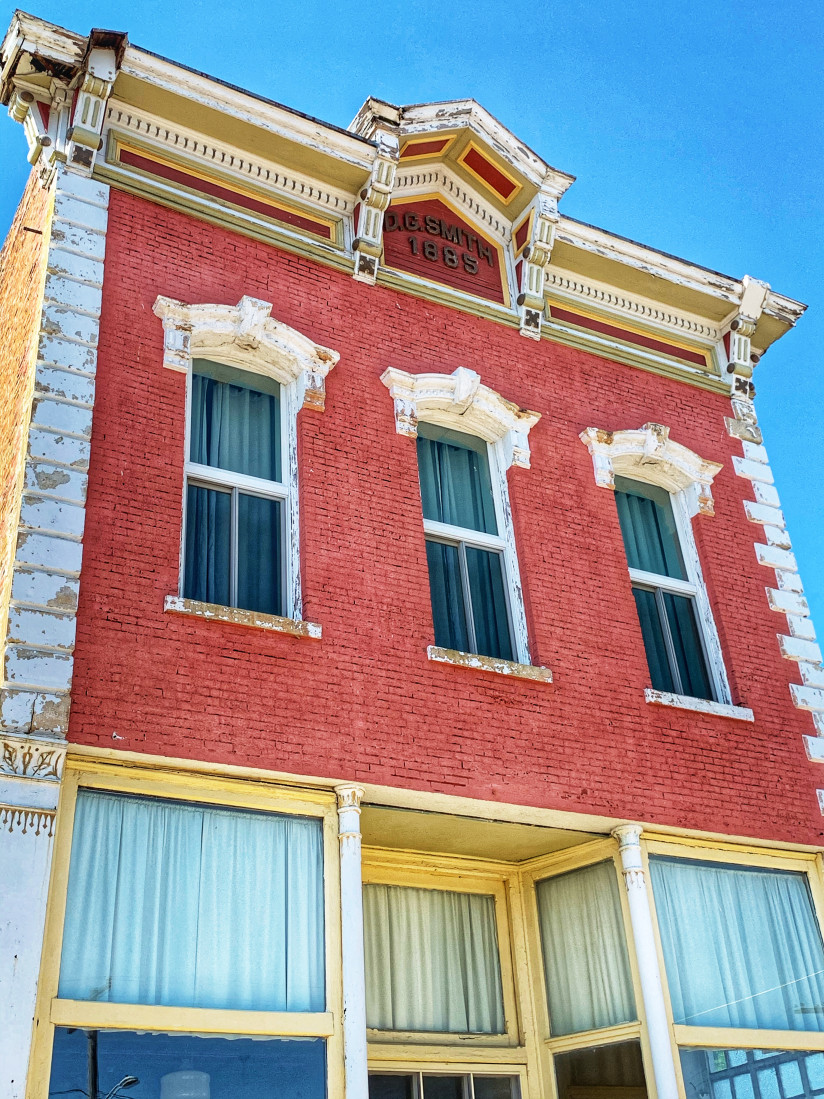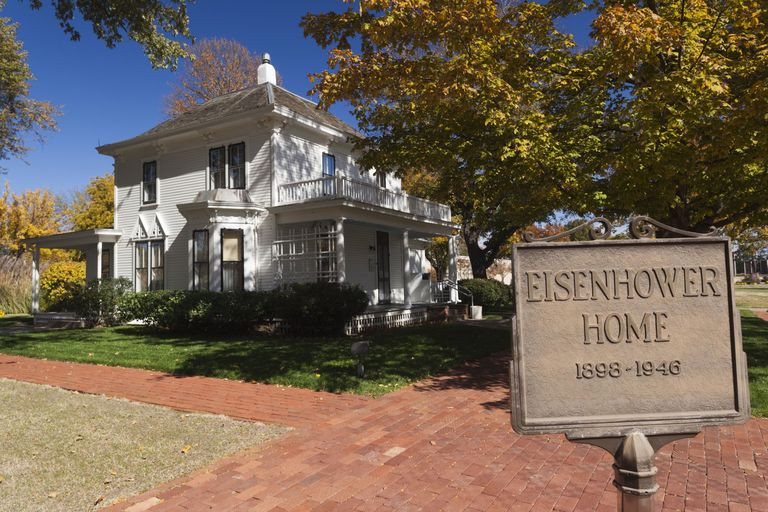5 More Historic Sites to Learn While Walking Tour
Share lessons on Abilene history with your family by walking, biking, or driving by these five sites that are listed on the National Register of Historic Places, an official list of the country's historic places worthy of preservation. Learn about architecture as well by looking for unique features like colored tiles, finials (distinctive ornaments along the roofline), sculptures, and masonry medallions and arches over windows and doorways.
1. D.G. Smith Building, 217 West First Street
 A late Victorian Italianate building constructed in 1885, this structure housed a pharmacy that met the needs of the citizens as Abilene grew into a more civilized city following the cattle town era.
A late Victorian Italianate building constructed in 1885, this structure housed a pharmacy that met the needs of the citizens as Abilene grew into a more civilized city following the cattle town era.
2. Kubach House, 101 South Buckeye Avenue
 Abilene businessman Gustave Kubach built this Craftsman-style bungalow in 1922 featuring a unique second-story camelback (an upper half-story stacked atop the main structure but set back from the front façade).
Abilene businessman Gustave Kubach built this Craftsman-style bungalow in 1922 featuring a unique second-story camelback (an upper half-story stacked atop the main structure but set back from the front façade).
3. Eisenhower Home, 201 Southeast Fourth Street
 President Dwight D. Eisenhower’s father purchased this six-room home in 1898 and Eisenhower grew up here with his parents and five brothers until he left for West Point in 1911. Two rooms were added when his grandfather moved in with the family. Make a mental note to return to tour the home, newly-renovated museum and library at a later time.
President Dwight D. Eisenhower’s father purchased this six-room home in 1898 and Eisenhower grew up here with his parents and five brothers until he left for West Point in 1911. Two rooms were added when his grandfather moved in with the family. Make a mental note to return to tour the home, newly-renovated museum and library at a later time.
4. Rock Island Depot, 200 Southeast Fifth Street
 Built in 1887, this Victorian-era depot built to accommodate both passengers and freight was associated with Abilene's second boom period after the cattle trade was forced out of town and the local economy shifted to agriculture.
Built in 1887, this Victorian-era depot built to accommodate both passengers and freight was associated with Abilene's second boom period after the cattle trade was forced out of town and the local economy shifted to agriculture.
5. Versteeg/Swisher House, 506 South Campbell
 This home was constructed in 1888 of soft red brick believed to have been made on the property by the owner, Dutch brick maker Nicholas Versteeg. The house served as an advertisement for Versteeg’s second brickyard business location in Abilene.
This home was constructed in 1888 of soft red brick believed to have been made on the property by the owner, Dutch brick maker Nicholas Versteeg. The house served as an advertisement for Versteeg’s second brickyard business location in Abilene.
